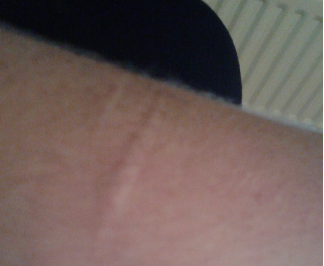
Description
The largest human organ is the skin, with a surface area of about 25 square feet which forms the outer surface of the body. There are over 4 million pores in the skin. In 1 square inch of skin there lies 4 yards of nerve fibers, 1300 nerve cells, 100 sweat glands, 3 million cells, and 3 yards of blood vessels. Every square inch of the human body has an average of 32 million bacteria on it. Humans shed about 600,000 particles of skin every hour - about 1.5 pounds a year. Most dust particles in your house are made from dead skin. By 70 years of age, an average person will have lost 105 pounds of skin.
The Thickness of skin ranges from 0.5 mm to 4 mm thick depending upon location. Thinner skin shows signs of ageing first.
Function
The skin shields the body against infection, injuries, parasites, and helps regulate the bodies temperature. It provides a store for lipids and water, and manufactures vitamin D; and excretes salts and small amounts of urea. The skin acts as a water resistant barrier so essential nutrients aren't washed out of the body, controls fluid loss through sweating. It also gathers sensory information about the environment.
Colour
Black, brown, yellow, red, pink, or white.
Shape
The form of the body.
Location
Covering the whole body.
The largest human organ is the skin, with a surface area of about 25 square feet which forms the outer surface of the body. There are over 4 million pores in the skin. In 1 square inch of skin there lies 4 yards of nerve fibers, 1300 nerve cells, 100 sweat glands, 3 million cells, and 3 yards of blood vessels. Every square inch of the human body has an average of 32 million bacteria on it. Humans shed about 600,000 particles of skin every hour - about 1.5 pounds a year. Most dust particles in your house are made from dead skin. By 70 years of age, an average person will have lost 105 pounds of skin.
The Thickness of skin ranges from 0.5 mm to 4 mm thick depending upon location. Thinner skin shows signs of ageing first.
Function
The skin shields the body against infection, injuries, parasites, and helps regulate the bodies temperature. It provides a store for lipids and water, and manufactures vitamin D; and excretes salts and small amounts of urea. The skin acts as a water resistant barrier so essential nutrients aren't washed out of the body, controls fluid loss through sweating. It also gathers sensory information about the environment.
Colour
Black, brown, yellow, red, pink, or white.
Shape
The form of the body.
Location
Covering the whole body.
 RSS Feed
RSS Feed
